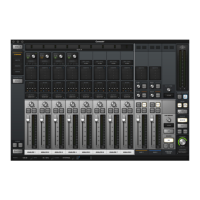Apollo Thunderbolt Software Manual Introduction 7
Introduction
Welcome To Apollo!
High-Resolution Music Production with Classic Analog Sound
Designed to play a central role in modern studios, Apollo audio interfaces incorporate
a true “no compromise” approach to audio quality. Building upon decades of UA’s
analog hardware heritage, they offer extremely high-resolution sonics, with the lowest
THD and highest dynamic range in their class. Apollo’s top-end converters — and UA’s
meticulous attention to circuit design — translate into greater accuracy and depth in
your recordings, from tracking and overdubbing, to mixing and mastering.
Note: Throughout this manual, Apollo refers to the entire Apollo family of audio
interfaces (Apollo, Apollo 8, Apollo 8p, Apollo 16, Apollo 16 MkII, Apollo Twin,
and Apollo Twin MkII) unless specifically noted otherwise.
Realtime UAD Plug-In Processing for Monitoring and Tracking
While Apollo’s “natural” sound is exceedingly open and transparent, it can quickly
deliver a wide range of classic analog tones and color via its Realtime UAD Processing.
Available with SOLO, DUO, or QUAD Core processing onboard, this onboard DSP
Acceleration allows for recording and mixing through UAD Powered Plug-Ins — with as
low as sub-2ms latency — so producers can quickly monitor, audition, and optionally
“print” audio using classic analog emulations from API, Ampex, Lexicon, Manley, Neve,
SSL, Studer, and more.*
Important Fundamental Concept: The primary function of the included Console
application is to control Apollo’s hardware input monitoring, Unison plug-ins, and
Realtime UAD Processing. Console MUST be used to take advantage of these
features. Console replaces the software input monitoring feature of the DAW
mixer.
* All trademarks are recognized as property of their respective owners. Individual UAD Powered Plug-Ins sold separately.

